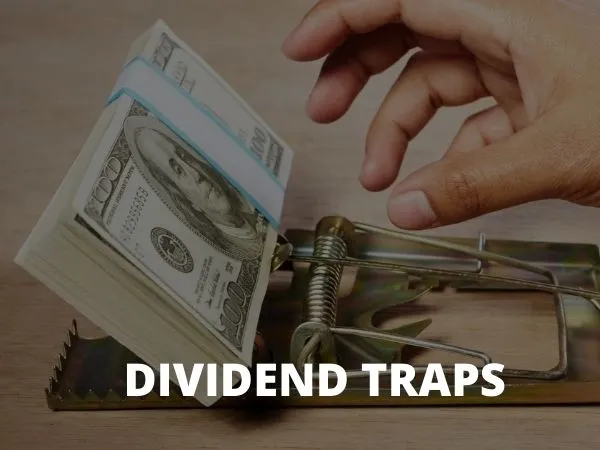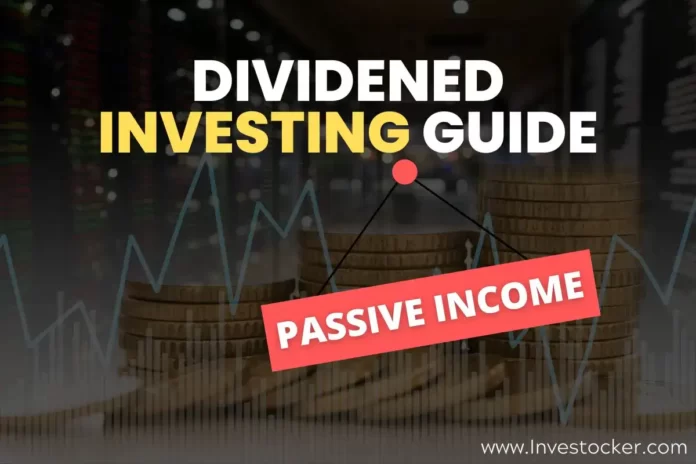Dividend Stocks: Many people talk about making Passive Income. But most of the time, it is just a bunch of hype. But did you know that there is one investment vehicle that provides actual real Passive Income? Of course, you already know, it is Dividend Stocks. But what are dividends, how do you get them, how much can you get, and what are the best stocks or index funds to give you the best returns? Those are some excellent questions. And in this article, we give you a beginner’s guide to investing with dividend stocks. So that you can generate real, actual, and honest-to-goodness Passive Income. Are you ready? Let’s go!
What are Dividend Stocks?
Investing in dividend stocks has been around for a long time. Dividends are a corporation’s payout to its shareholders in exchange for buying and holding their stock. They will pay you in cash for having that firm’s shares. It’s almost like a small bonus they’ll offer you quarterly, monthly, or annual. As I have mentioned, many types of Passive Income are available on the market, but dividend stocks outweigh all of them.
- It has the lowest barrier to entry in terms of earning. You don’t have to buy any fancy equipment. All you have to do is open a brokerage account, deposit funds into it, and you can start earning income right away.
- Passive Income through dividend investing is significantly less risky and is less likely to liquefy. When you start putting money in dividend stocks, you can begin with small amounts and gradually increase your holdings. Or you can also set a specific automated distribution amount when you receive your paycheck.
Why Do Companies Offer Dividends?
When a corporation becomes successful, it has a few paths it might go down.
The first choice is to reinvest the profits into the business since the end goal is to develop the company and make it more valuable.
For example, “Meta” generates income; they typically prefer to reinvest those earnings into the company. So they’re not the type of company that pays substantive dividends. But some corporations might not have a simple way to reinvest the money into the business. Instead, they share profits with their shareholders.
Best Companies Paying Dividends
“AT&T” is a powerful multinational telecommunications company; they generate a lot of income. Still, they can’t expand because they are already well-established in the marketplace. Instead, they take those profits and distribute a portion of them to shareholders in the form of dividend payments.

Dividend stocks allow well-established corporations to split a percentage of their gains with investors. If you can consistently make dividends, many people would prefer to hold on to these shares since it’s an excellent way to generate money from your assets.
Role of Stock Value in Choosing Dividend Stocks
What can utilize dividend stocks to either create immediate income or develop long-term wealth? Both are essential for long-term investing. Many investors like dividend stocks because they provide income. But, since dividends are never guaranteed, it is also necessary to carefully examine stock values. If you become a dividend stock investor, bonuses are typically paid quarterly through the shareholders’ brokerage account.
Also Read: Best 5 Tips On Money Management For Teenagers
But each organization will set the payment date and frequency individually. Let’s look at “AT&T” to see how this works.
AT&T‘s annual dividend yield is at 5.34%. If you buy one stock, which is only $20.80, you’ll earn about $1.11 as a dividend. You might think, “Well, one dollar can even buy a burger.” Yes, that’s true. But think of it this way, What can build up your shares over time. You could earn thousands of dollars in dividend payments each year if you owned a thousand shares. You can then reinvest it to buy more shares or cash it out to pay some bills; the choice is yours.
Advantages of Investing in Dividend Stocks
Investing with dividend stocks is that they feature consistent payments as part of your return. As the Covid-19 Pandemic has proved, not every company issuing dividend stocks will necessarily continue a dividend distribution. But a well-diversified portfolio of dividend equities can generate consistent income, brain or shine.
Capital Appreciation
When you combine dividends with capital appreciation, your overall returns can approach, if not surpass, those of the broader market.
How Do You Choose Which Company To Invest In?
Due Diligence is a must to choose a company to invest in. You can search on “Google” and “Yahoo Finance” to give you some information. If you’re using “Yahoo Finance,” you can go to their statistics and learn about each company’s actual dividend and financial metrics. You can also go to the company’s website and look at their “10k” or the company’s annual report on their financial performance. Don’t forget to check out their investor relations page too. Suppose you’re ever considering investing in a company. In that case, it is beneficial to go to their website and type in investor relations. There you’ll see detailed information on the company’s profits and financials.
Company’s Profits And Financials
Knowing the firm’s profit and financials is not enough. When investing in their dividend stocks, there are a few things to be mindful of. The payout ratio is one of them. When looking at dividend equities, the payout ratio is the dividends as a percentage of their profits. So, if you see this figure as extremely high (say over 100), this may be a red flag. This company may be unable to sustain the highly high dividends they’re giving out.
What Are Dividend Traps?
It is referred to as a “Dividend Trap,” and you should keep an eye on it. Dividend Traps occur when a corporation pays a very high dividend and then reduces that dividend when additional investors arrive.

Let’s say Company A, Company B, and Company C are offering dividend stocks. Company A pays a 3% annual dividend. Company B offers a 6% dividend. And then Company C gives a 12% yearly dividend. If you’re a newbie, you might choose Company C. Indeed; it looks like a good deal.
But, when something appears too good to be true, there may be something fishy going on that you are unaware of.
Check Payout Ratio Before High Dividend Percentage
If corporations give out very high dividends, check the payout ratio. It would be best to look at their dividend history and stock price. Assume we have Company A and Company B. Company A is now paying a 6% dividend. But the company’s stock has lost 4% yearly for the last ten years. Since there’s a large dividend, your overall profit is maybe 2% every year.
Company A is not expanding but dropping. Another firm, Company B, is paying out a 3% dividend but is growing at a 4% pace. You might gain 7% with a lesser payout from them.
Companies With a Long Track Record
Some great companies have a long track record of dividend payments and dividend yields.
“3M” has a dividend yield of 3.3%. “P&G” has a dividend yield of 2.2%. And “Lowe’s” has a dividend yield of 1.3%. All three of these firms have grown their stock dividends for more than 50 years. Because of that, they are known as dividend kings.
Dividend stocks may come from practically any sector. And the dividend amount and percentage yield can vary significantly between firms. Investors always consider the long term rather than the short term.
Advantages Of Long-Term Investing
One of the advantages of Long-Term Investing in dividend stocks is that you will also receive many tax benefits. It is regarded as long-term capital gains. In the United States, the tax is roughly 20%.
Long-term capital gains tax is another reason why many wealthy individuals pay less in taxes.
The rich take advantage of things like long-term capital gains. Is this sustainable? Sure! If you have a diversified portfolio, this could be sustainable over the long term. But, What if you don’t want to invest in a particular firm? Or go through the process of studying a company and looking at its financial statements?
Index Funds And ETFs
If you don’t want to do that, there are other options out there that may have different risks. But may also be beneficial, such as Index Funds or ETFs. They can track certain dividend stocks, such as a “Vanguard High Yield Dividend Fund.” It has an expense ratio of about 0.09%. “Vanguard,” a reputable company, also offers a meager fee. It manages trillions of dollars in assets for many customers.
They essentially put up these ETFs or Exchange Traded Funds that would catch many different dividend stocks.
Future Passive Income Stream
Passive income through dividends is a long-term game. If you want long-term success, it is best to reinvest the Dividends rather than spending them on your rent or car payments. It is not something you enter and get out of in a couple of weeks and make a lot of money. It is not going to make you a millionaire overnight. But you could be a millionaire if you have patience and are willing to work towards the future.
Dividend Investing is impressive and one of my favorite ways to help grow my future passive income streams. If you have suggestions on utilizing dividends for financial growth, share them in the comments below.
